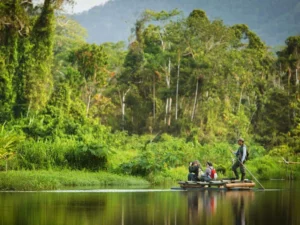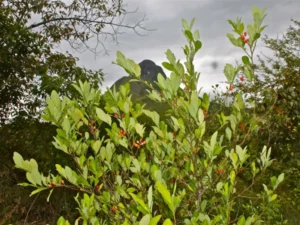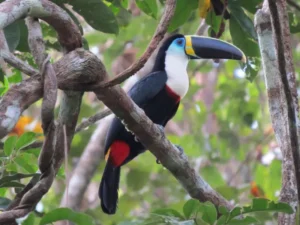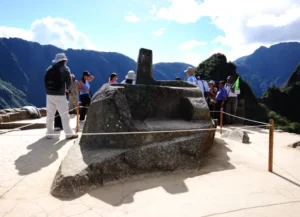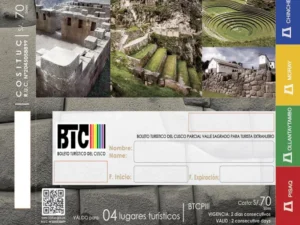The best way to visit the Peruvian Amazon
The Peruvian Amazon is one of the richest and most diverse regions on the planet. It covers more than 60% of the national territory and is home to extraordinary biodiversity: from dense rainforests to mighty rivers, ancestral indigenous communities and an unparalleled variety of flora and fauna. A visit is not just a trip; it is an immersion into one of the world’s most complex and vital ecosystems. However, due to its size, climatic conditions and accessibility, planning a visit requires a clear strategy. This article explains the best way to explore the Peruvian Amazon, respecting its environment, supporting sustainable tourism and guaranteeing a safe and enriching experience.

Contents
Choosing the right destination within the Peruvian Amazon
The first step in planning a successful visit is to define which part of the Peruvian Amazon you want to visit, since not all areas are the same and do not offer the same experiences. The main tourist destinations are concentrated in three regions: Loreto, Madre de Dios and Ucayali, each with unique characteristics.
Iquitosthe capital of Loreto, is the best known gateway. Accessible only by air or river, this riverside city serves as a base for exploring the Amazon River and its tributaries, such as the Nanay River or the Itaya River. From here, excursions are organized to nature reserves such as the Pacaya-Samiriaone of the largest protected areas in the country, famous for its lagoons, monkeys, pink dolphins and exotic birds.
On the other hand, Puerto Maldonadoin Madre de Dios, is ideal for those looking for a more wildlife watching and rainforest oriented experience. Located near the Manú National Park and the Tambopata Communal Reserve, this destination offers a high concentration of biodiversity. It is common to spot herons, macaws, caimans, peccaries and a great variety of insects and medicinal plants.
Finally, Pucallpa, in Ucayali, is less frequented by international tourists, but offers more direct contact with indigenous communities such as the Shipibo-Conibo, known for their art, traditional medicine and spiritual cosmovision.
The choice of destination should be based on the traveler’s interest: wildlife watching, cultural contact, adventure or tranquility in the middle of nature.

Opt for a tour with specialized operators
Since the Amazon is not a conventional tourism destination, the best way to visit is through travel agencies specialized in ecotourism or community-based tourism. These companies have trained guides, safe boats, sustainable accommodations and safety protocols adapted to the conditions of the rainforest.
The most recommended tours include stays in lodges or ecolodges, which are accommodations built with local materials and designed to minimize environmental impact. Many of them are located within protected areas or on private land with responsible forest management. Some notable lodges include Inkaterra Reserva Amazónica, Refugio Amazonas or Posada Amazonas, all in the Madre de Dios region.
These tours usually last between 3 and 7 nights and combine activities such as guided walks along nature trails, canoeing, bird watching, visits to macaw clay licks, traditional fishing and meetings with local communities. The presence of a bilingual naturalist guide is essential to interpret the environment and ensure the safety of the group.

Ideal season to visit
The Peruvian Amazon has two main seasons: the dry season (May to October) and the rainy season (November to April). Each offers distinct advantages.
During the dry season, river levels drop, which facilitates hiking and increases the chances of animal sightings near water sources. In addition, there are fewer mosquitoes and conditions for active tourism are more favorable.
On the other hand, the rainy season transforms the region: the rivers rise, flooding the forests and creating what is known as “flooded jungle” or várzea. This makes it possible to navigate among the trees and observe aquatic species such as the pink dolphin or the manatee. Although the rains are frequent, they are usually intense but short, and biodiversity during this period is especially abundant.
The choice of season will depend on the type of experience desired, but most travelers prefer the dry season for its greater comfort.
Preparation and practical recommendations
Visiting the Amazon requires adequate preparation. Although the tours include most of the services, there are key aspects that the traveler must manage personally:
- Vaccinations: Up-to-date vaccinations against yellow fever, hepatitis A and typhoid are recommended. Some areas require an international vaccination certificate.
- Mosquito protection: Carry long-lasting repellent, wear long-sleeved clothing and sleep under a mosquito net. Although the risk of malaria or dengue fever is low in controlled tourist areas, prevention is essential.
- Light and functional luggage: Sturdy shoes, quick-drying clothes, camera, binoculars and basic medicines.
- Cultural and environmental respect: Avoid direct contact with communities that are not open to tourism, do not extract plants or animals, and follow the indications of the guides at all times.
Sustainable tourism and environmental responsibility
One of the biggest challenges in the Amazon is the balance between tourism and conservation. Therefore, the best way to visit is to opt for sustainable experiences that benefit local communities and protect the ecosystem.
More and more lodges and operators are working in partnership with indigenous communities, allowing tourism revenues to stay in the region. Some projects are even managed directly by indigenous people, such as those in the Tambopata Reserve or the Shipibo communities in Ucayali.
In addition, many initiatives promote reforestation, endangered species protection and environmental education. As a traveler, choosing these models not only improves the quality of the experience, but also contributes to the care of one of the lungs of the planet.
Conclusion
The best way to visit the Peruvian Amazon is not simply to arrive and observe, but to do so with respect, preparation and awareness. It involves choosing appropriate destinations, traveling with responsible operators, respecting natural cycles and supporting community-based tourism. Beyond the adventure, this trip offers a unique opportunity to connect with nature in its purest state and understand the importance of preserving this ecological treasure.
To explore the Amazon is not only to see what is there, but to understand what is at stake. And in that understanding, true sustainable tourism is born.


